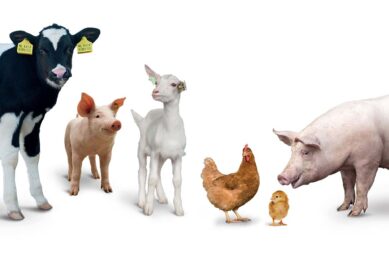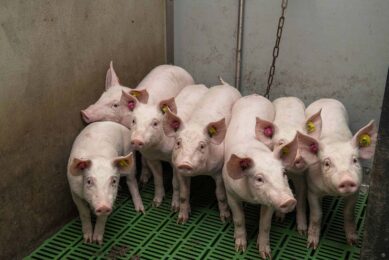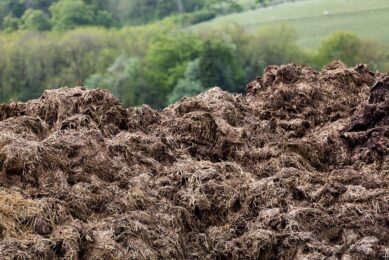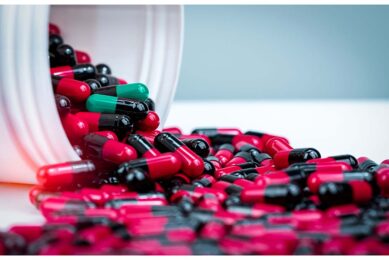Assessing probiotic Bacillus germination
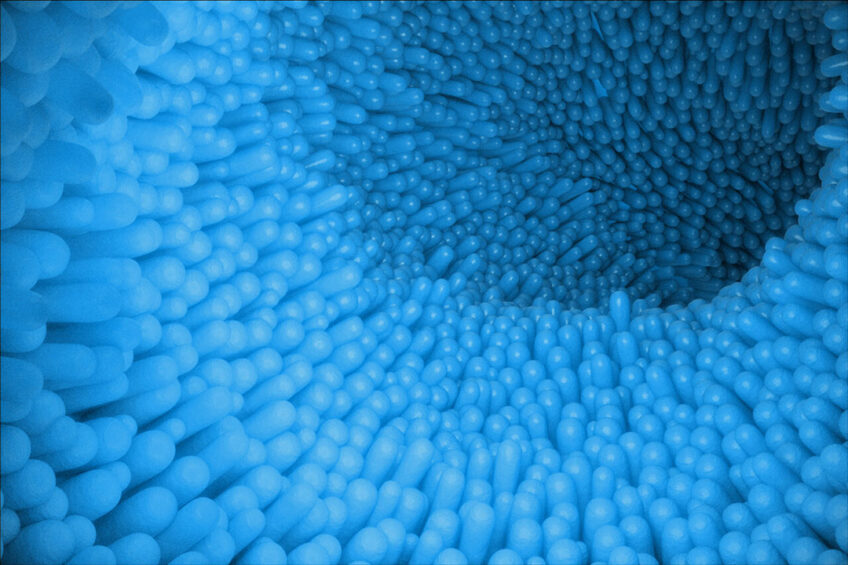
Bacillus probiotics are now widely used in antibiotic-free production. Yet, evaluating the probiotic effect of individual strains on animal performance remains a challenge. Understanding their germination potential is a good place to start.
Many of the probiotics used to supplement feed are of the Bacillus genus and this is largely due to their ability to produce spores. This natural phenomenon – known as sporulation – means the bacteria undergo a three-stage lifecycle; where the inert spores germinate, proliferate into vegetative cells (VC) and then re-spore when nutrients are exhausted (Figure 1). And it gives Bacillus a distinct advantage over other non-spore former probiotic micro-organisms.
Figure 1 – (Non-)specific beneficial mechanisms of Bacillus attributable to viable vegetative cells and spores in the gut.
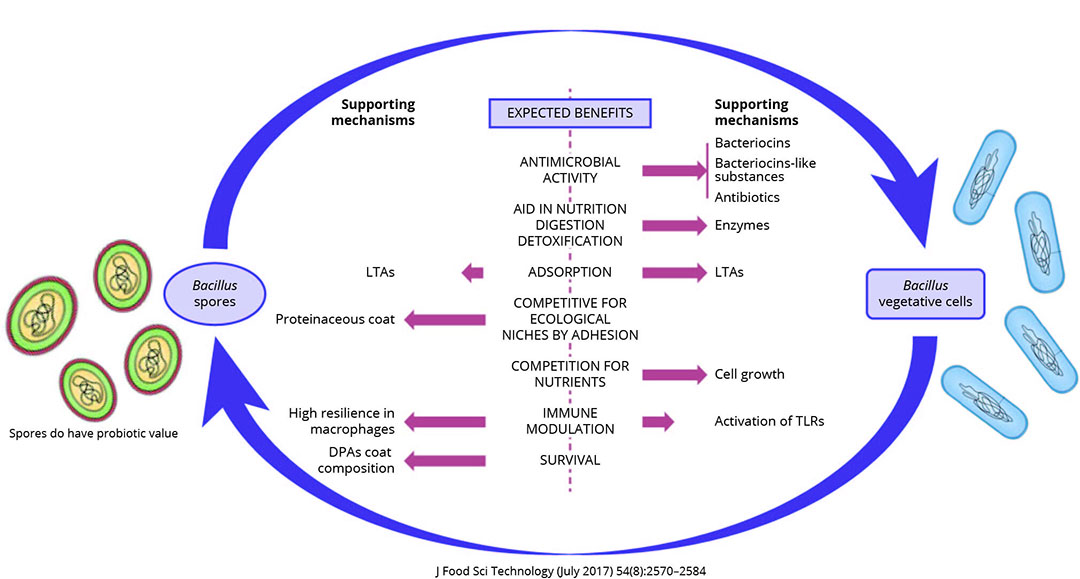
By naturally transitioning from active to inert form, Bacillus can survive in nutrient-free and harsh environments. Remarkably, they are resistant to chemicals, high temperatures, radiation, desiccation, and even predators. It is these inherent properties that enable them to withstand feed processing and storage conditions, as well as the challenging physiological barriers encountered in the gut.
Crucially, not all probiotic Bacillus strains are the same. Which means that finding a strain that will deliver performance benefits to the animals not easy. It is vital that commercial products are supported by a detailed understanding of the unique behaviour and germination of the individual Bacillus strains. The 3-strain Bacillus of Enviva PRO, for example, is the result of extensive screening, characterisation, and controlled sporulation on an industrial scale to ensure it maintains a high resistance to external factors until it is ingested by the animal.
When it comes to evaluating the probiotic effect of spore-formers in the intestinal tract, there are also several points to keep in mind. First of all, sporulation is a reversible process. Secondly, spores and VC don’t have the same resistance profile against conditions encountered in the gut – VC are highly sensitive to stomach acidity and bile salt, whereas spores are unaffected. Equally important is the fact that spores and VC do not have the same functional properties.
Understanding germination
To fully understand and maximise a probiotic’s efficacy, it’s necessary to first recognise that germination is a dependent process. Environmental conditions associated with different parts of the gastrointestinal tract (GIT) can influence the outcome. Oxygen and pH levels, nutrient availability and the presence of microbiota, as well as differences in transit time (rapid versus late germination), maturity of the intestinal tract and gut motility can all have an impact. Additional factors include the size of the administered dose and choice of Bacillus strain.
Given the sheer number of variables, it’s evident that not all probiotic strains will behave in the same way and differences in germination profile will occur between host specificities. Based on this rationale, we believe it is important to challenge the assumption that one strain will follow the same pathway in different species.
So how do you assess the germination potential of different Bacillus probiotics?
Need for speed
Although rapid germination just after ingestion in the stomach may initially appear to offer a competitive advantage, it’s not that clear cut. On one hand, the nutrient rich and low microbial pressure of the small intestine is a good growth environment for germinated cells. But on the other, the presence of gastric juices and bile make this pathway far from ideal for the highly susceptible germinated cells.
So rather than focusing on speed, other key factors such as strain specificity and the conditions applied during the sporulation process prior to ingestion are likely to have a greater impact on germination activity.
Does quantity matter?
Despite there being a huge variety of dosage among commercial probiotic spore-formers, comparing them on this basis is not viable. Probiotic properties are strain-specific or strain-dependent, so it’s wrong to assume that the more colony-forming-units (CFUS) ingested, the better the animal’s performance. Rather, it is the responsibility of suppliers to set the optimal inclusion dose for their product, and this should be based on the results of rigorous in vivo studies. In addition, using a multi-strain probiotic – such as Enviva PRO – does offer advantages as it combines strain specificities and delivers complimentary benefits.
What about lifecycle?
Several methods exist for tracking Bacillus germination in the gut, but they lack precision and accuracy. This means that any data should be approached with a clear understanding of its limitations (see box). It’s also worth bearing in mind that for producers, the ultimate test of a probiotic is whether it benefits animal health and performance, creating that favourable nutribiotic state.



